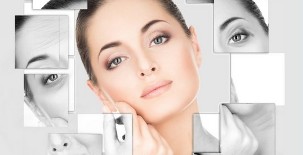A few years ago, rejuvenation of laser has been of a distant dream that seemed like a magical process. Today, looking younger than his years, everyone can. The design, in order to perform such a procedure it is necessary to study the properties of the laser method of rejuvenation, which will help you to make the right decision.

Before you go to a specialist, you have to remember that there are two types of laser resurfacing, in particular, to:
- the non-ablative laser treatment;
- ablative laser treatment.
Each and every one of them is this:
- the full (combined);
- the incomplete (partial).
Both of these methods share one common feature – when the laser procedure is done properly, the skin becomes fresher, and the "last several years".
During the procedure, the skin is warmed with a laser beam, and the laser affects the deeper layers of the skin and the cells that produce fibers (fibroblasts). The Laser allows the cells to carry out the micro-circulation in certain of the layers of the skin are more active. If you want to use this method in the presence of post-acne scarring, ptosis, sagging of the skin.
Rejuvenation erbium laser is used, which, when exposed to the skin, does not "touch" the top layer of the skin, such as the wavelength of 1550 nm. After the procedure, the skin of which has been carried out for the impact to become luminous, smooth finish. If the skin is wrinkled, the face and the color, but the pigmentation, stretch marks, acne, etc., and in this way, it will help you to quickly improve the situation. The route of exposure based on the exposure to the laser beam, which is the long waves do not affect the upper layers of the skin and stimulates the cells in the dermis.
The main difference between the ablative methods described above is that the laser exposure is performed on all of the layers of the skin, including the upper as well as the procedure to be used by the carbon dioxide laser (CO2). This method is preferable and it is most often used to remove small facial wrinkles, the wrinkles that form around the eyes, to remove the pigmentation, to improve the tone of your skin. The process also includes a powerful effect on the dermis, which favors the smoothing the skin's texture and has a pronounced lifting-effect. The wavelength of the laser used in this method is to 10600 nm.
The principle of the ablative method, the effect of the water in all of the layers of the skin with a laser beam.
After the procedure, the rehabilitation period will be higher than if the conduct of non ablative rejuvenation, which includes the effects of the deeper layers of the skin. In both cases, the laser affects the water molecules that reside in the skin, and the liquid is "hidden" from the dermis by means of evaporation, followed by synthesis of collagen and elastin, which are necessary for the rejuvenation of the skin.
The intensity of the exposure of each of the methods depends upon the current skin condition and desired result. In addition to this, the selection of the appropriate methods of laser resurfacing can practitioner, who in this way have the right qualifications and plenty of experience.
The difference of the continuous laser treatment and the fractional impact of the
In order to get a complete rejuvenation, it is necessary to use a laser beam, which has an impact on the skin, a "strong point". The method also includes the constant grinding of the epidermis, and so, gradually, the damaged cells are replaced with new ones. The current effect has gradually replaced the leather processing, solid (full) method, which is easy to understand. We're talking about here, that is, after the laser treatment, the skin is restored for a long period of time in addition to this, there is the formation of scar tissue on the surface of the skin.
The current exposure limits, which are based on the principle of exposure of the skin to the waist, that is, the beam falls on the skin is not a "strong point" and, thereby, to form a small network. This means that there is an impact on a small patch of your skin, and not on the entire surface. In particular, the ray of the can cover a surface area of about 20% of the entire face, but the rejuvenation effects on the face, despite the zonal division of the radiation exposure.
Photorejuvenation laser
Photorejuvenation is an improved form of such effects, which are not affected by the upper layers of the epidermis. Therefore, this technique has a great difference from the conventional method. Photorejuvenation treats age spots, vascular disease, corrects the appearance of photodamage. The exposure to the sun's rays are being used, the length of which will depend on the type of equipment to be used in the process, in particular.
Thus, when the radiation of the "glorification" of water, i.e., the beam does not interact with the liquid, but is absorbed by hemoglobin and melanin, which gives the photorejuvenation procedure is as efficient as possible, especially if it is a problem with the blood vessels, and pigmentation. Photorejuvenation gives rise to the beginning of the production of collagen, which tightens the skin, smoothes wrinkles, improves colour of a skin and improves its tone.
After the procedure, the rehabilitation period is not required, and the procedure is performed without anesthesia. Unscrupulous "experts" don't tell the customers about the different methods of laser resurfacing, which is "forced" to use it at the same time. The result of such a process is not getting the expected or even a negative result, this means that you will decide to rejuvenate, you should only go to an experienced doctor with a high capacity.























